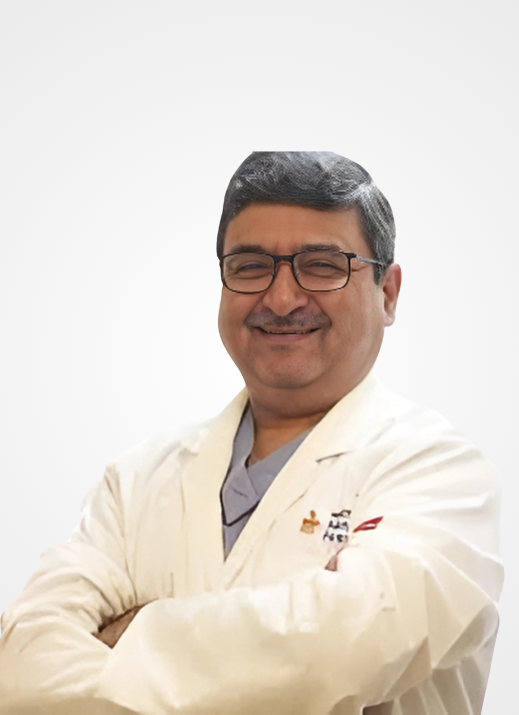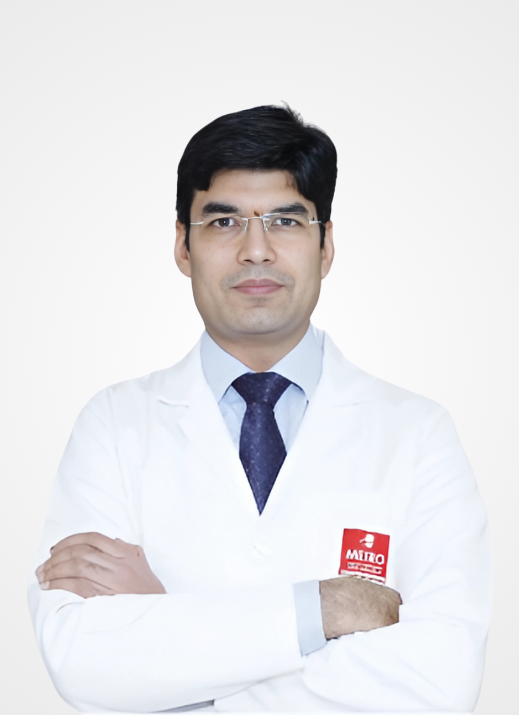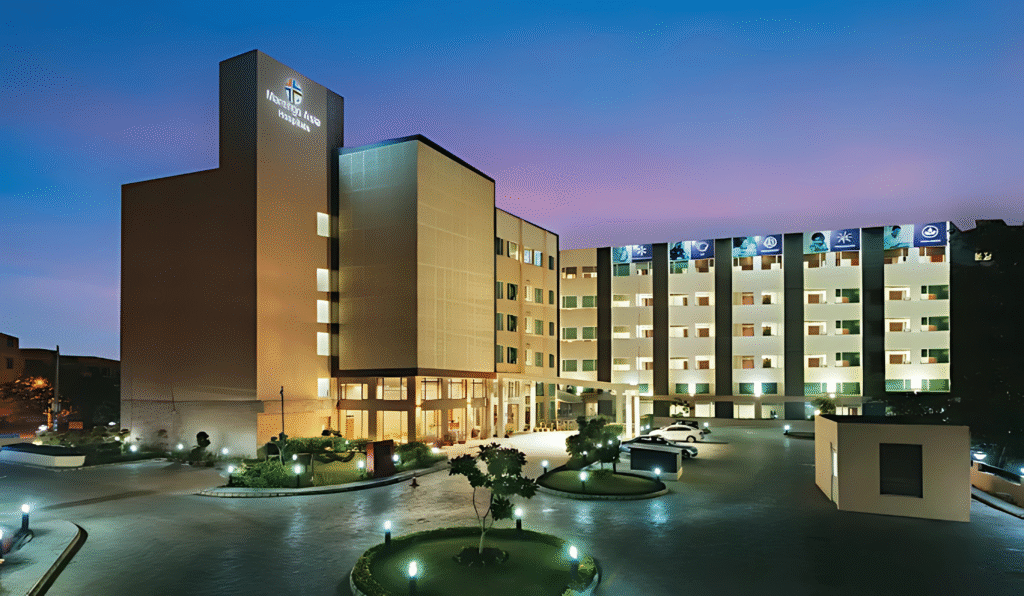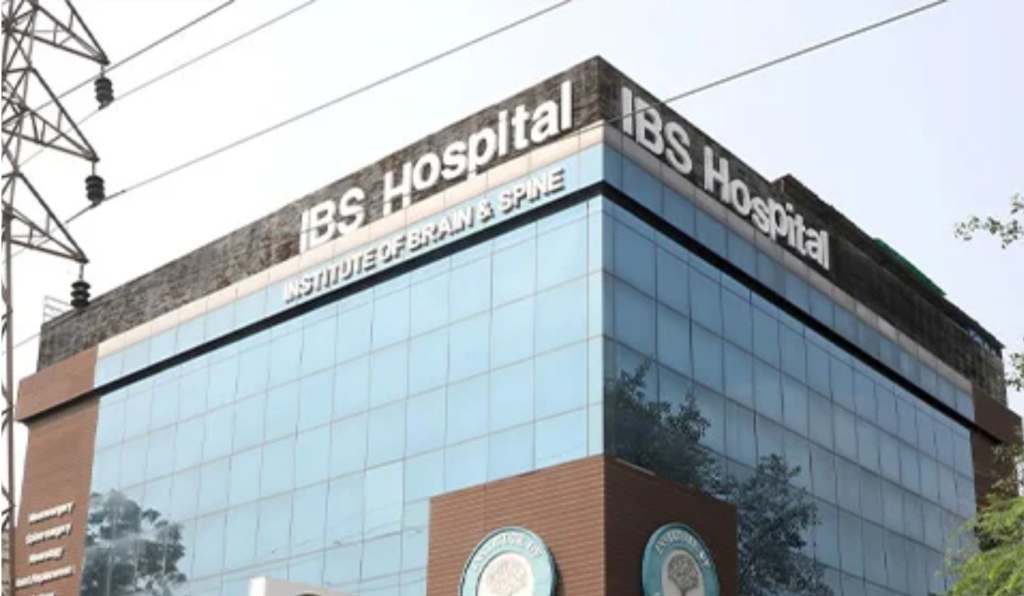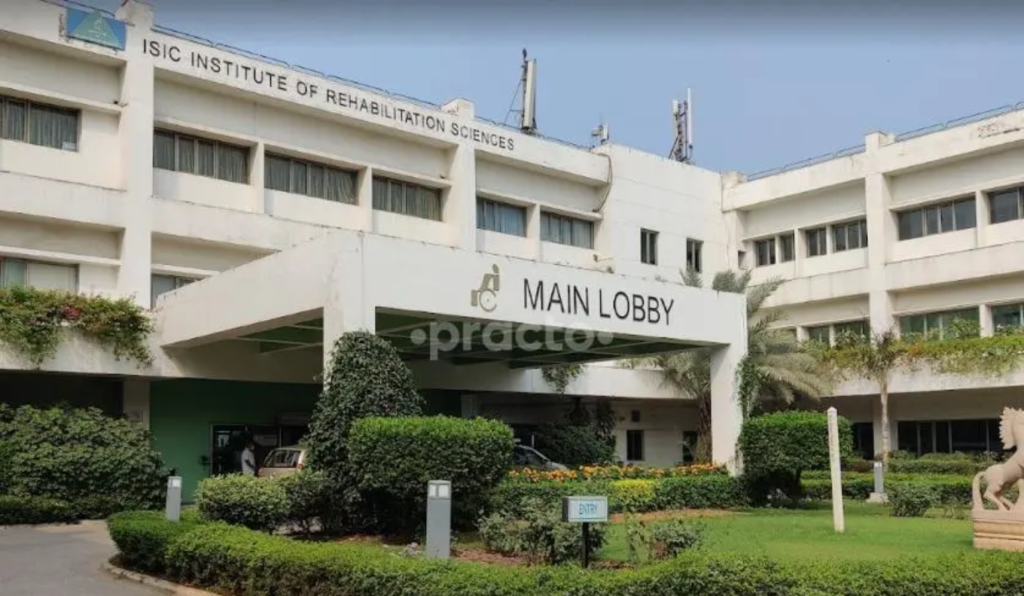Osteoarthritis Treatment Cost in India

What is Osteoarthritis?
Osteoarthritis (OA) is a degenerative joint disorder that results from the gradual wearing away of cartilage—the smooth tissue that cushions bones in a joint. As cartilage deteriorates, bones begin to rub against each other, causing pain, stiffness, and inflammation. This condition most often affects the knees, hips, spine, and hands, especially in older adults.
Post-traumatic arthritis, a form of OA that develops after an injury like a ligament tear or fracture, and subchondral bone sclerosis (hardening of bone just beneath the cartilage) are commonly associated with advanced OA. If left untreated, osteoarthritis can lead to severe joint damage and disability.
How Does Osteoarthritis Develop?
Osteoarthritis (OA) develops gradually over time due to the breakdown of cartilage, the protective tissue that cushions the ends of bones in a joint. When this cartilage wears down, bones begin to rub against each other, leading to pain, stiffness, and swelling. Initially, this wear may be minimal and asymptomatic, but as the condition progresses, joint space narrows, and inflammation increases.
Contributing factors include age-related degeneration, repetitive joint stress, obesity (which places added pressure on weight-bearing joints), and past injuries or fractures. Conditions like post-traumatic arthritis and joint deformities can accelerate the onset. Over time, joint fluid becomes less effective, and bone spurs may form, worsening mobility. Eventually, the degeneration can become so severe that surgical intervention such as joint replacement may be needed.
Causes and Risk Factors of Osteoarthritis
Osteoarthritis (OA) is a degenerative joint disease that occurs when the protective cartilage cushioning the ends of bones wears down over time. While aging is a primary contributor, many underlying causes and risk factors increase the likelihood or severity of the condition.
Primary Causes of Osteoarthritis
- Cartilage Degeneration: The breakdown of cartilage leads to friction between bones, causing pain and reduced joint movement.
- Joint Injuries: Prior trauma to joints—especially knees, hips, or shoulders—can accelerate wear and tear, even years later.
- Repetitive Stress: Continuous stress from sports, heavy physical work, or certain postures can damage joints over time.
- Congenital and Developmental Bone Disorders: Conditions like hip dysplasia or bone malformations at birth can alter joint mechanics and increase OA risk later in life.
Risk Factors Contributing to Osteoarthritis
- Age: Risk increases significantly after age 45 as cartilage naturally deteriorates.
- Obesity: Excess body weight puts added stress on load-bearing joints like the knees and hips.
- Genetics: A family history of OA or joint abnormalities can make one more susceptible.
- Gender: Women, especially post-menopausal, are more likely to develop OA.
- Muscle Weakness: Weak muscles around joints can fail to support them properly, leading to faster degeneration.
- Bone Density Disorders: Conditions like osteoporosis can indirectly contribute by weakening bones near joints, making them prone to damage.
Understanding these causes and risk factors can help in early diagnosis and preventive care to delay or manage the progression of osteoarthritis.
Symptoms of Osteoarthritis
Osteoarthritis (OA) is a degenerative joint disease that results from the gradual breakdown of cartilage. It commonly affects weight-bearing joints and develops slowly over time, often becoming more severe as the condition progresses.
Joint Pain and Tenderness
Pain is the most prominent and persistent symptom of OA.
- Aching or sharp pain in the affected joint, especially after activity.
- Pain that worsens with use and improves with rest.
- Tenderness when pressure is applied to or around the joint.
Stiffness and Limited Movement
Joint stiffness is especially noticeable after periods of inactivity.
- Morning stiffness that typically lasts less than 30 minutes.
- Difficulty moving the joint or reduced flexibility during daily tasks.
- Stiffness after sitting or resting, often called “gel phenomenon.”
Grinding Sensation and Bone Spurs
The loss of cartilage leads to physical changes within the joint.
- Grating or crunching sounds during movement (crepitus).
- Swelling around the joint due to inflammation or fluid buildup.
- Bone spurs (osteophytes) that may form and feel like hard lumps near the joint.
Types of Osteoarthritis
Osteoarthritis is the most common form of arthritis, caused by the gradual wear and tear of cartilage in the joints. Over time, this breakdown leads to pain, stiffness, and reduced mobility, primarily in weight-bearing joints like the knees, hips, and spine. Understanding its various types helps in identifying the progression of the disease and choosing the right treatment.
Primary osteoarthritis develops due to the natural aging process. As cartilage wears down over time, bones start to rub against each other, causing pain, stiffness, and reduced joint movement. It usually affects weight-bearing joints such as knees, hips, and spine. Genetics and lifestyle factors such as repetitive joint use or being overweight can speed up the degeneration process.
This type occurs as a result of another medical condition or injury. Causes can include rheumatoid arthritis, fractures, obesity, or metabolic disorders like diabetes. Secondary osteoarthritis tends to develop earlier in life and progresses more quickly. It’s common in people who have had joint trauma or chronic conditions affecting bone and cartilage health.
A more severe and inflammatory form, erosive osteoarthritis mostly affects the hands and is more common in postmenopausal women. It causes rapid cartilage breakdown and joint erosion, often accompanied by swelling, redness, and pain. This form progresses faster than typical osteoarthritis and may cause permanent joint deformities if not managed early.
Rare forms include post-traumatic osteoarthritis and osteoarthritis due to congenital joint abnormalities or endocrine disorders. These types usually stem from unique conditions and may require highly specialized management.
Most Dangerous Type of Osteoarthritis
Advanced (End-Stage) Osteoarthritis is considered the most dangerous. At this stage, the cartilage between joints is completely worn away, leading to bone-on-bone contact. This results in severe, constant pain, stiffness, limited mobility, and joint deformities. Without surgical intervention such as joint replacement, it can severely impact quality of life and independence.
Why Choose India for Orthopaedic Treatment?
India has emerged as a global hub for advanced orthopaedic care, attracting thousands of international patients each year. With a unique blend of medical excellence, cutting-edge technology, and cost-effective treatment, India offers unmatched advantages for those seeking relief from joint disorders, spinal conditions, fractures, nerve compression syndromes, and more. Whether it’s a complex surgical intervention or conservative therapy, patients receive world-class care tailored to their individual needs. Here’s why India stands out as a preferred destination for orthopaedic treatments.
India is home to some of the most experienced and internationally trained orthopaedic specialists. Many surgeons have trained in top global institutions and bring extensive expertise in managing complex cases—ranging from osteoarthritis and fractures to congenital and developmental bone disorders.
Indian hospitals offer state-of-the-art facilities equipped with cutting-edge imaging, robotic surgery, arthroscopy units, and minimally invasive surgical technologies. Dedicated orthopaedic departments ensure focused treatment for ailments like spinal disorders, ligament tears, and bone density issues.
India offers world-class orthopaedic care at a fraction of the cost compared to Western countries. Treatment plans—including surgery, rehabilitation, physiotherapy, and follow-ups—are bundled into affordable, transparent packages, making high-quality care accessible to international patients.
Unlike many countries where patients face long waiting periods for orthopaedic procedures, India ensures prompt consultations, diagnostics, and surgeries. This significantly reduces disease progression and enhances recovery outcomes.
India is a global leader in medical tourism, offering:
✔ Dedicated international patient coordinators
✔ Medical visa assistance for easy travel
✔ Affordable accommodation & travel support
✔ Multilingual staff, including English-speaking doctors
This ensures a smooth and hassle-free experience for foreign patients traveling to India for treatment.
Indian hospitals emphasize treatment and post-operative rehabilitation. Personalised physical therapy plans, nutritional counseling, and long-term follow-up care help restore mobility and improve overall quality of life after treatment.
Different Types of Treatments for Osteoarthritis
Osteoarthritis is a degenerative joint disease that requires a multidisciplinary treatment approach to reduce pain, improve mobility, and slow disease progression. The choice of treatment depends on the severity of the condition, affected joints, and the patient’s overall health. Below are the major treatment options used to manage osteoarthritis, especially when related ailments like post-traumatic arthritis, bone spurs, or early-onset osteoarthritis are involved.
How It Works:
Medications help in controlling pain and inflammation in affected joints. They range from over-the-counter analgesics to prescription nonsteroidal anti-inflammatory drugs (NSAIDs) and corticosteroids.
Reduce inflammation in joint tissues
Block pain signals to improve comfort
Slow joint degeneration in some cases
When It’s Used:
Medication is often the first line of treatment, especially in early or moderate stages of osteoarthritis.
Persistent joint pain affecting daily life
Swelling or stiffness that doesn’t improve with rest
To avoid or delay surgical intervention
Benefits:
Medications can help patients manage symptoms and remain active.
Provides rapid relief from pain
Easy to administer (oral, topical, or injectable)
Supports other treatments like physiotherapy
How It Works:
Physiotherapy strengthens the muscles around the affected joints and improves flexibility and range of motion through tailored exercises.
Improves joint alignment and load distribution
Reduces stiffness and strengthens supporting muscles
Enhances functional independence
When It’s Used:
Ideal for all stages, especially when joint mobility is compromised or after injury.
To maintain or regain movement in stiff joints
Post-injury or surgery rehabilitation
Prevents joint deconditioning in elderly patients
Benefits:
This non-invasive option helps reduce the need for medication or surgery.
Improves long-term joint function
Reduces pain through natural muscle strengthening
Boosts mobility and balance
How It Works:
Joint injections, such as corticosteroids or hyaluronic acid, are administered directly into the affected joint to relieve pain and inflammation.
Delivers medicine directly where it’s needed
Reduces inflammation and joint fluid build-up
Improves joint lubrication and cushioning
When It’s Used:
Used when oral medications are ineffective or in moderate to severe osteoarthritis.
Flare-ups with significant pain or swelling
For quick pain relief before important life events
When conservative treatments are not enough
Benefits:
These can provide relief lasting weeks to months.
Immediate and targeted relief
May delay the need for surgery
Allows greater participation in physical therapy
How It Works:
Changes in daily habits like weight loss, diet adjustments, and activity management can significantly reduce stress on joints and improve overall well-being.
Reduces mechanical stress on joints
Minimizes inflammation through diet and nutrition
Promotes physical health through controlled movement
When It’s Used:
Recommended for all stages as part of long-term management.
Early-stage osteoarthritis
Obese or overweight individuals
Patients aiming to avoid medication reliance
Benefits:
Non-medical, cost-effective, and sustainable approach.
Supports effectiveness of medical treatments
Reduces long-term disability risk
Enhances mental and physical well-being
How It Works:
This regenerative therapy uses stem cells, usually harvested from the patient’s own body, to regenerate cartilage and repair damaged tissues.
Stimulates new cartilage growth
Reduces inflammation within joints
Promotes natural healing at the cellular level
When It’s Used:
Ideal for early to moderate stages or when surgery is not yet recommended.
Younger or middle-aged patients
Limited cartilage damage but persistent symptoms
Patients looking for alternatives to joint replacement
Benefits:
A promising alternative for delaying joint surgeries.
May improve joint structure and function
Reduces need for invasive interventions
Long-lasting relief in selected candidates
Different Procedures for Osteoarthritis
In cases where conservative treatments for osteoarthritis no longer provide adequate relief, surgical procedures become essential to restore function and alleviate chronic pain. These procedures range from minimally invasive techniques to full joint replacements, depending on the severity of joint damage, patient age, and overall joint health. Below are some of the most commonly used procedures to treat advanced osteoarthritis and associated conditions like joint deformities, cartilage wear, and secondary bone damage.
How It Works:
In total joint replacement, the damaged joint surfaces are removed and replaced with artificial implants made from metal, plastic, or ceramic.
Removes worn-out cartilage and bone
Replaces it with a prosthetic joint
Restores normal joint movement and alignment
When It’s Used:
Typically recommended for end-stage osteoarthritis when the joint is severely damaged.
Severe pain and stiffness limiting mobility
Joint deformity or collapse
Failure of non-surgical treatments
Benefits:
One of the most effective procedures for restoring function.
Dramatic pain relief
Improved joint function and quality of life
Long-lasting results, especially with newer implants
How It Works:
A minimally invasive surgical technique using a small camera (arthroscope) inserted into the joint to remove loose cartilage, smooth rough surfaces, or clean inflamed tissue.
Small incisions and less tissue disruption
Allows real-time visualization of joint damage
Can repair minor joint abnormalities
When It’s Used:
Effective in early stages or for diagnosing unclear symptoms.
Mechanical symptoms like joint catching
Limited cartilage damage
Synovitis or inflamed soft tissue
Benefits:
Ideal for faster recovery and less postoperative discomfort.
Shorter hospital stay
Quicker return to daily activities
Minimally invasive approach
How It Works:
Osteotomy involves cutting and realigning bones to shift weight away from the damaged part of the joint.
Reduces pressure on the arthritic part of the joint
Allows better weight distribution
Preserves natural joint as long as possible
When It’s Used:
Recommended in younger, active patients with damage limited to one joint side.
Uneven wear in the joint
Bowleg or knock-knee deformity
As a delay tactic before total joint replacement
Benefits:
Can extend the life of the joint significantly.
Maintains natural joint integrity
Postpones or avoids joint replacement
Restores mechanical alignment
How It Works:
This advanced version of joint replacement uses robotic arms to assist surgeons in achieving precise alignment and placement of joint implants.
Enhances accuracy and precision
Customized planning using 3D imaging
Improves soft tissue balance
When It’s Used:
Best suited for complex cases or when high precision is necessary.
Previous failed surgeries
Joint deformities requiring tailored correction
When patients want improved recovery outcomes
Benefits:
Offers greater predictability and improved results.
Reduced postoperative pain
Faster rehabilitation
Lower risk of implant misalignment
How It Works:
This approach uses smaller incisions and specialized tools to perform joint surgeries, reducing muscle and tissue disruption.
Targets the damaged joint with minimal access
Reduces trauma to surrounding structures
Preserves more of the natural joint environment
When It’s Used:
Used for partial replacements or selected joint repairs.
Early to moderate osteoarthritis
Patients unable to undergo full open surgery
Situations requiring faster healing
Benefits:
Allows for quicker recovery and lower complication rates.
Less scarring and blood loss
Shorter hospital stays
Faster return to normal life
Other Advanced Procedures and Costs
While common surgical options like total joint replacement or arthroscopy are widely used, advances in medical technology have introduced new techniques that offer promising results for patients with severe or complex osteoarthritis. These procedures are often recommended for individuals who are either not candidates for conventional surgeries or are looking for alternative, less invasive interventions with quicker recovery.
How It Works:
PRP therapy involves drawing a small amount of the patient’s blood, processing it to concentrate the platelets, and injecting it into the affected joint to promote healing.
Platelets release growth factors to regenerate cartilage
Stimulates repair of damaged tissue
Reduces joint inflammation
When It’s Used:
Best for mild to moderate osteoarthritis or in early stages of cartilage degeneration.
Athletes with joint wear
Patients avoiding or delaying surgery
Adjunct to physiotherapy or medications
Benefits:
A regenerative option with minimal side effects.
Non-surgical and outpatient procedure
Improves pain and mobility
Can delay need for surgery
How It Works:
Hyaluronic acid, a lubricant naturally found in joints, is injected to reduce friction and pain during movement.
Acts as a shock absorber in the joint
Improves joint fluid consistency
Enhances cushioning between bones
When It’s Used:
Effective for knee osteoarthritis in moderate stages.
Joint stiffness and grinding sensations
Failed response to oral medications
When surgery is not immediately needed
Benefits:
An in-clinic treatment with temporary but meaningful relief.
Minimally invasive and quick
Improves joint comfort during activity
May reduce use of painkillers
How It Works:
This procedure uses radio waves to heat and deactivate specific nerve branches that transmit pain signals from the arthritic joint.
Targets pain-carrying nerves
Reduces chronic knee or hip joint pain
Conducted under local anesthesia
When It’s Used:
Ideal for chronic osteoarthritis pain when surgery is delayed or not preferred.
Elderly patients not fit for surgery
Pain not controlled by injections or medications
Post-operative pain management
Benefits:
Provides long-term pain relief without structural changes.
Minimally invasive, outpatient
Lasts up to 6–12 months
Improves quality of life without major recovery
How It Works:
CAS utilizes computer technology to guide surgical instruments in real-time, improving the precision of joint replacements.
Uses 3D mapping of the joint
Offers real-time feedback to the surgeon
Ensures accurate alignment of implants
When It’s Used:
Recommended for complex joint anatomy or revision surgeries.
Abnormal joint structure
Previous joint surgeries
When robotic options aren’t available
Benefits:
Enhances outcomes and reduces human error.
Better implant longevity
Optimized joint alignment
Reduces complications
Best Doctors for Prostate Cancer Treatment in India
Best Hospitals for Prostate Cancer Treatment in India
Med Travel India Offerings
How does Med Travel India help you?
Med Travel India is dedicated to assisting international patients in accessing high-quality Orthopaedic treatment in India. We ensure a seamless medical journey from selecting the best hospitals to providing logistical support. Our team works closely with top doctors and healthcare facilities to offer personalised treatment plans tailored to each patient’s condition.
We take care of every aspect of medical travel, allowing patients to focus solely on their recovery. Below is a list of services provided by our company:
Services offered by Med Travel India

Seamless Planning for Your Medical Journey
Before you even arrive, we take care of all the groundwork. From connecting you with top specialists to ensuring all necessary medical evaluations are completed, we make your journey stress-free. Our goal is to provide clarity and comfort before your treatment begins.
- Free Medical Consultation
- Personalized Treatment Plan
- Estimated Cost & Duration
- Visa Assistanc
- Second Opinion Service
- Pre-Arrival Coordination
Worry-Free Travel & Comfortable Stay
We ensure that your journey to India is as smooth as possible. From booking your flights to arranging a comfortable stay near your hospital, we handle everything so you can focus on your health.
- Flight Booking Assistance
- Accommodation Booking
- Airport Pickup & Drop
- Language Interpretation Services
- Local Transport Arrangements
- Currency Exchange Support


World-Class Medical Care, Personalized for You
We ensure that your medical treatment is well-organized and efficient. Our team works closely with hospitals to facilitate smooth admissions, consultations, and procedures, ensuring you receive top-quality healthcare.
- Priority Appointment Scheduling
- Direct Hospital Admission
- Specialist Doctor Assignment
- Pharmacy & Medical Supplies
- Hospital Admission & Discharge Support
- 24/7 Customer Assistance
Continued Support for a Speedy Recovery
Your health journey doesn’t end after treatment. We provide post-procedure assistance to ensure a smooth recovery, whether you stay in India for rehabilitation or return home.
- Post-Surgical Care Coordination
- Rehabilitation & Physiotherapy
- Virtual Doctor Consultations
- Diet & Lifestyle Guidance
- Extended Stay Arrangements
- Post-treatment Medical Supplies


Beyond Healthcare, A Comfortable Experience
We offer additional services to make your stay in India comfortable and enriching, ensuring that your well-being is cared for beyond the hospital.
- Medical Insurance Settlement Help
- SIm Card Assistance
- Customized Sightseeing Tours
- Medical Document Assistance
- Personalized Assistance for Family Members
- Concierge Services
Reviews From Our Patient




